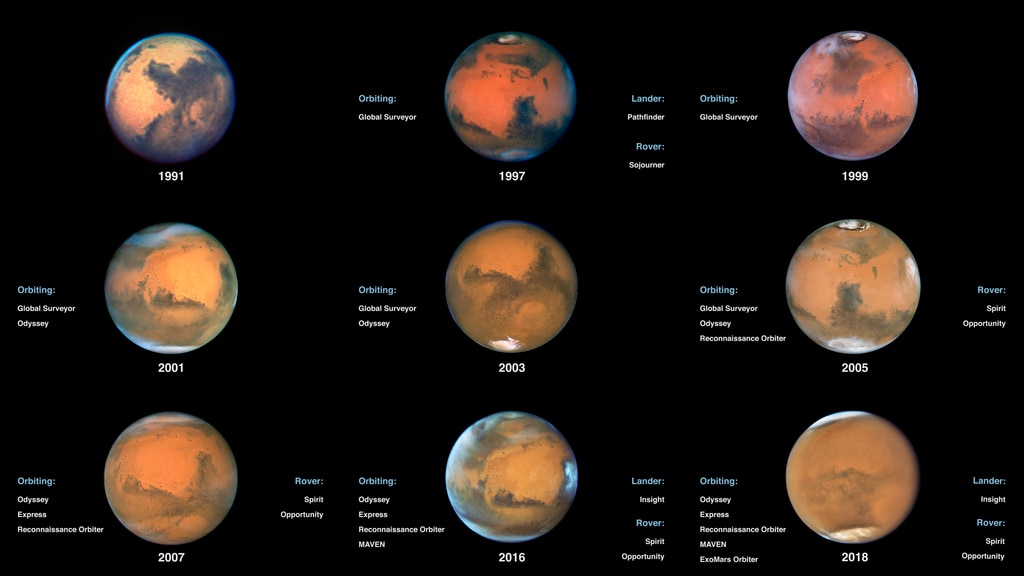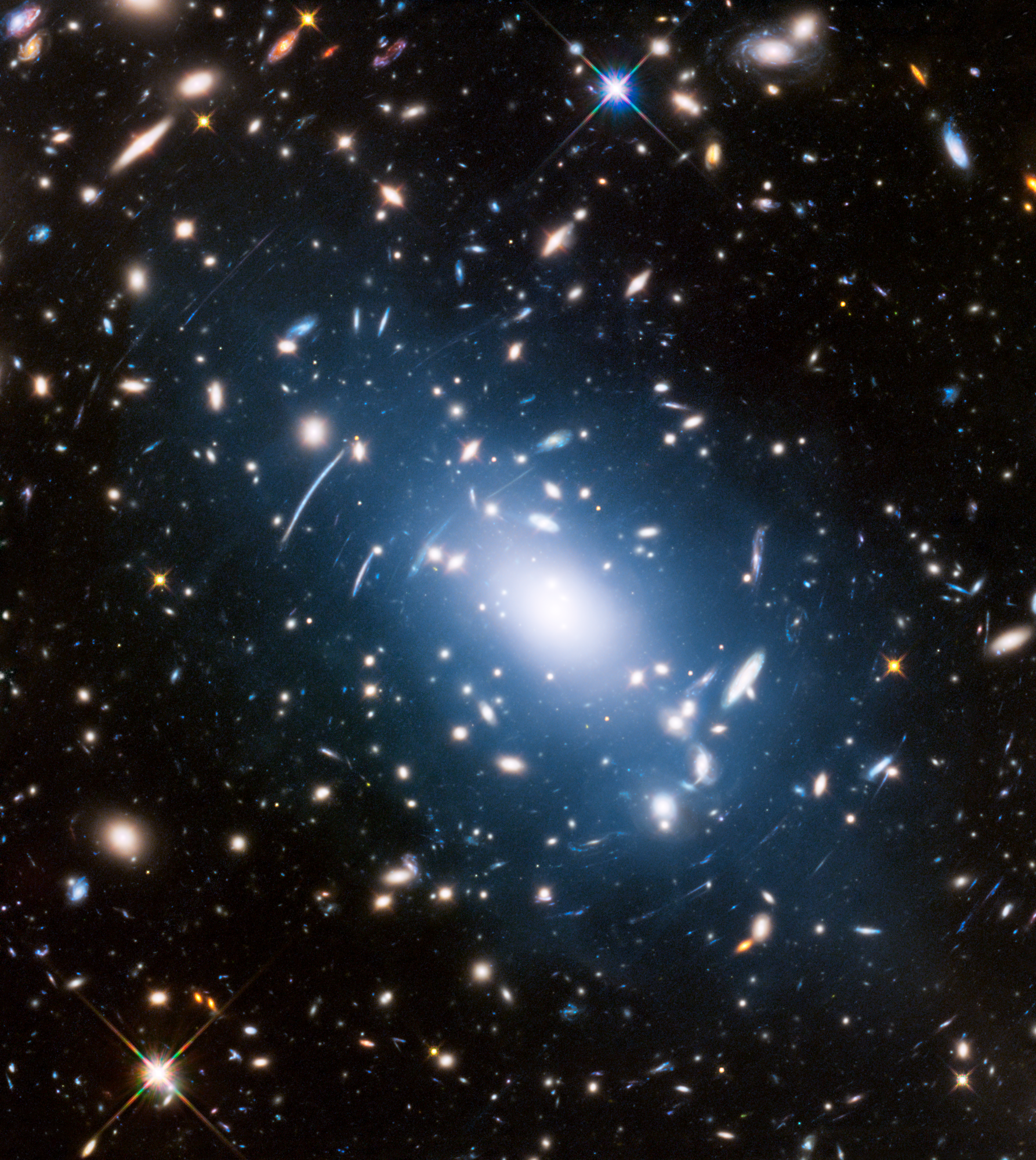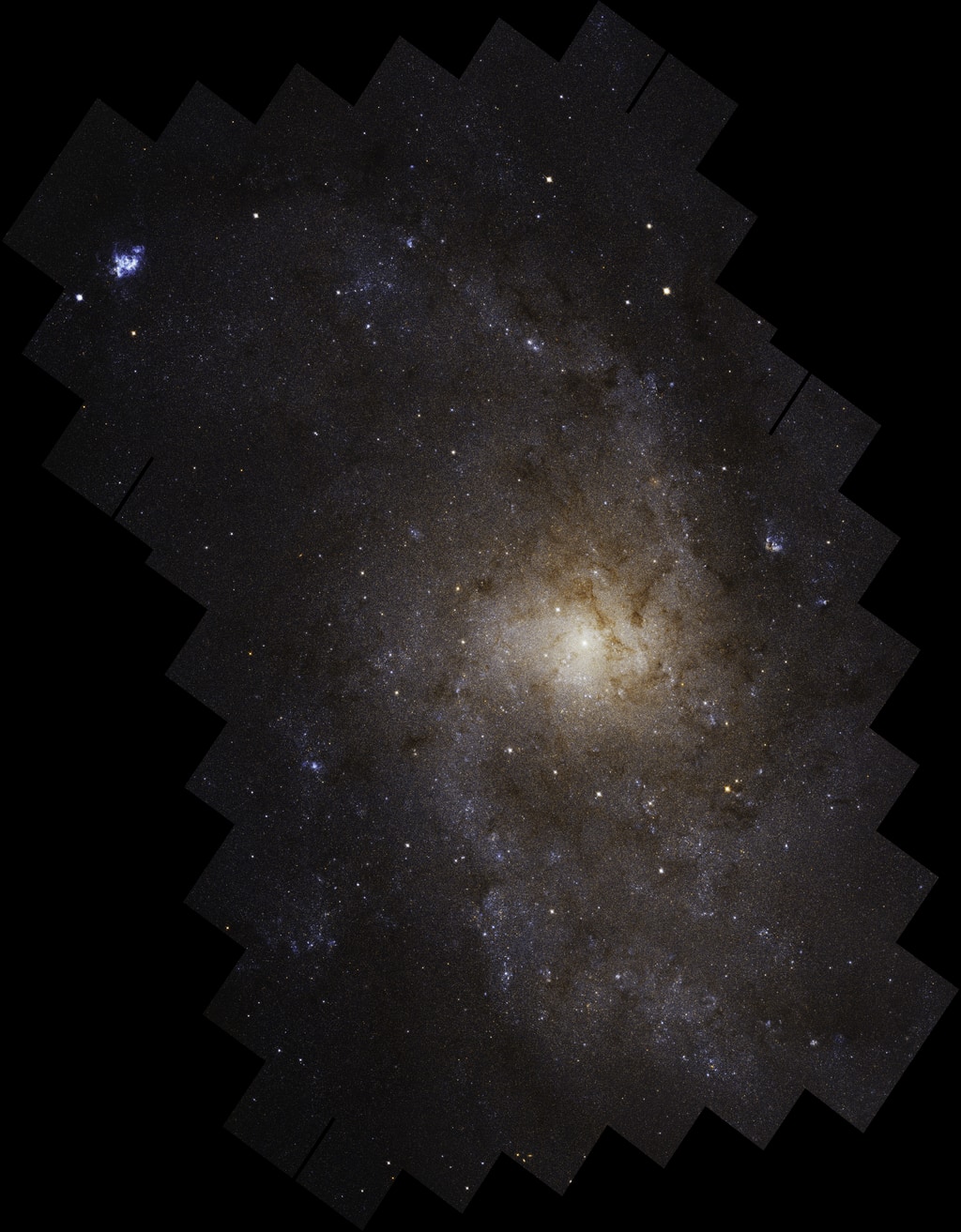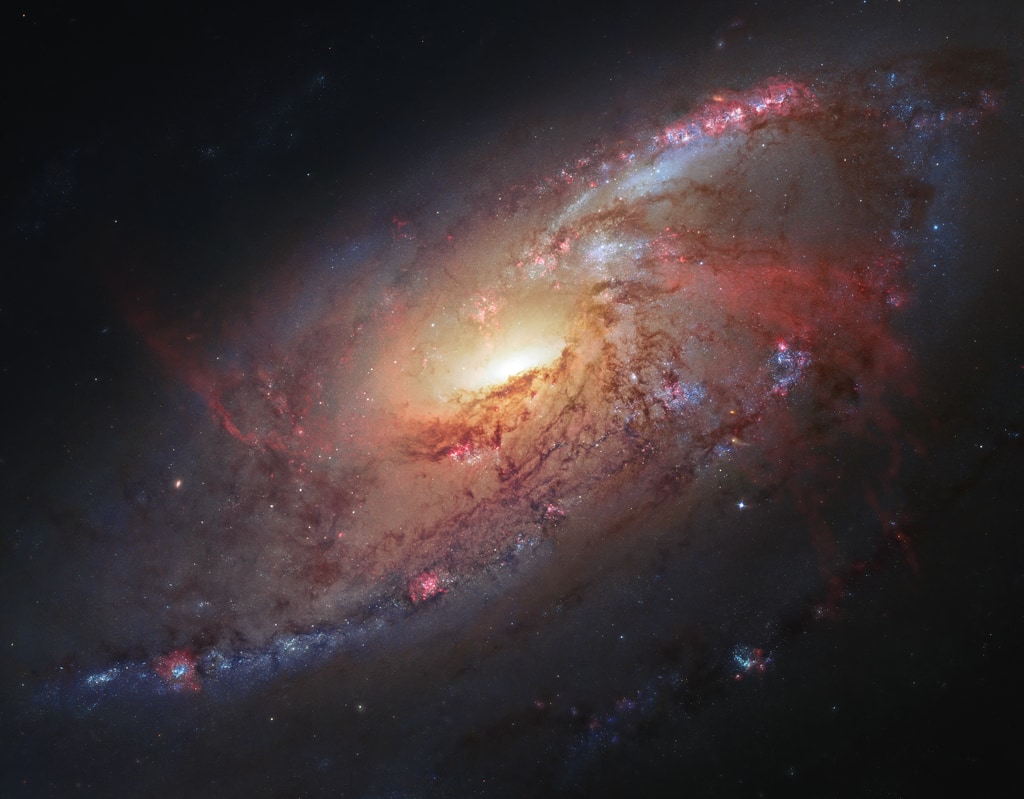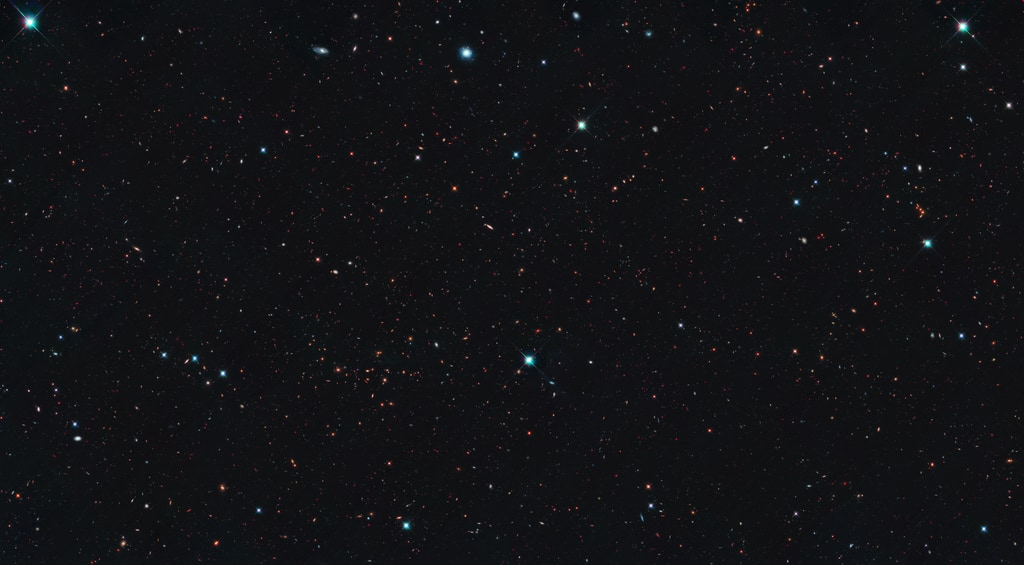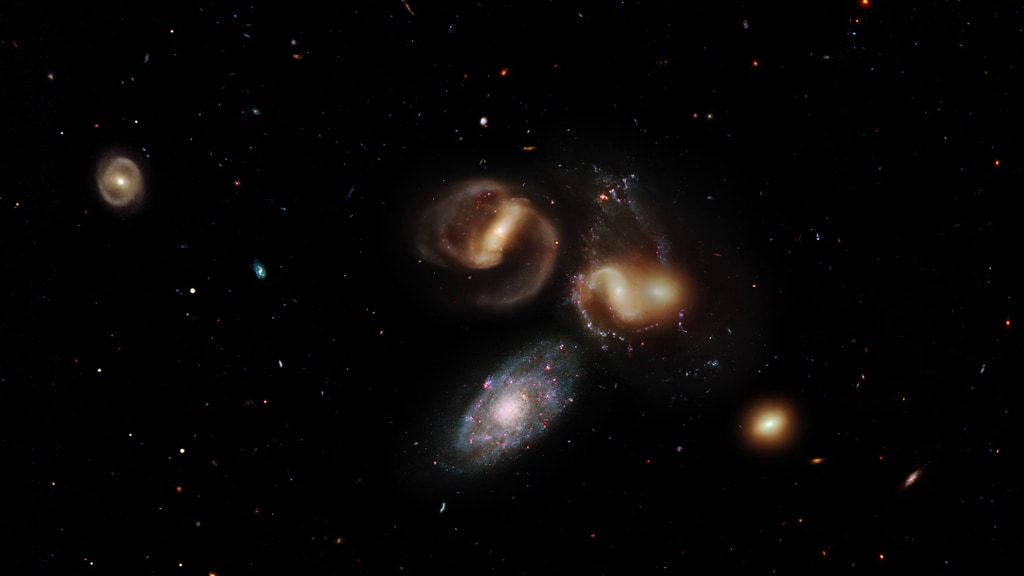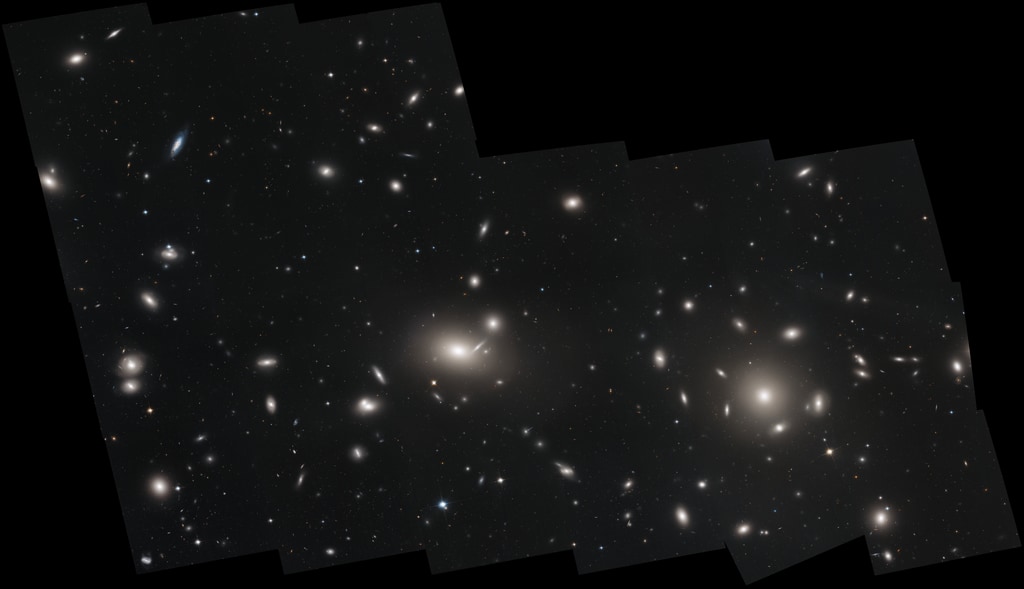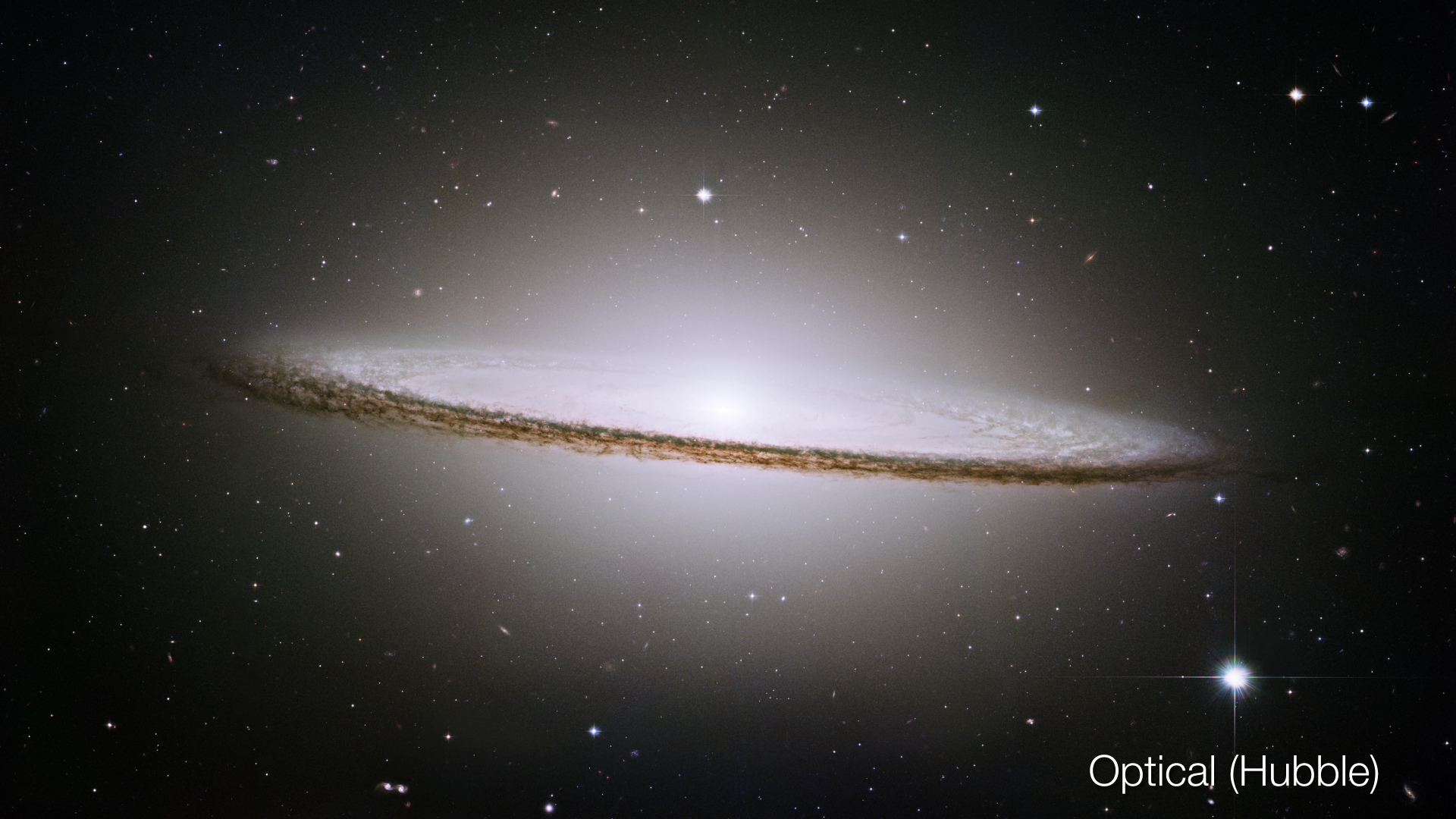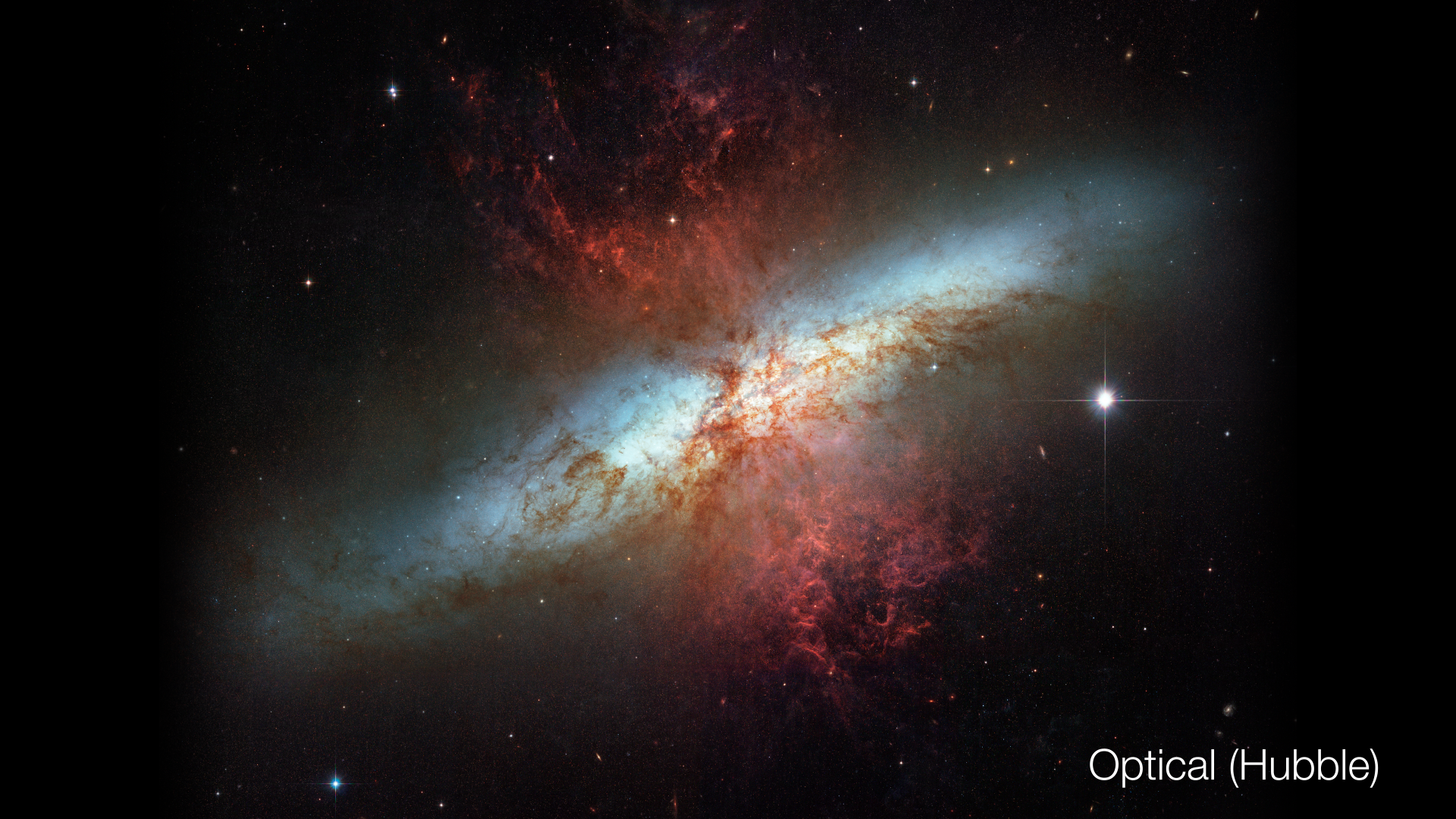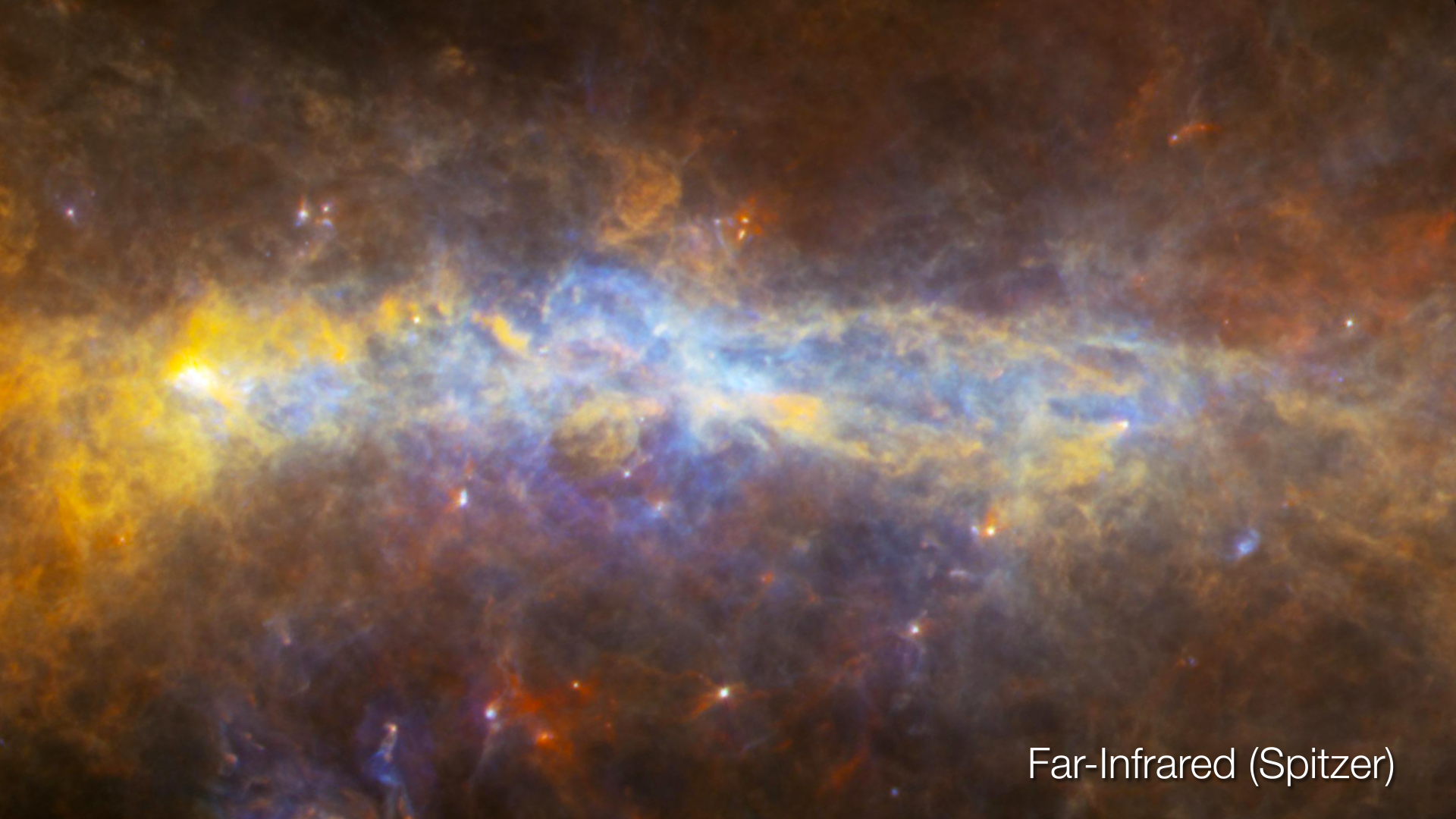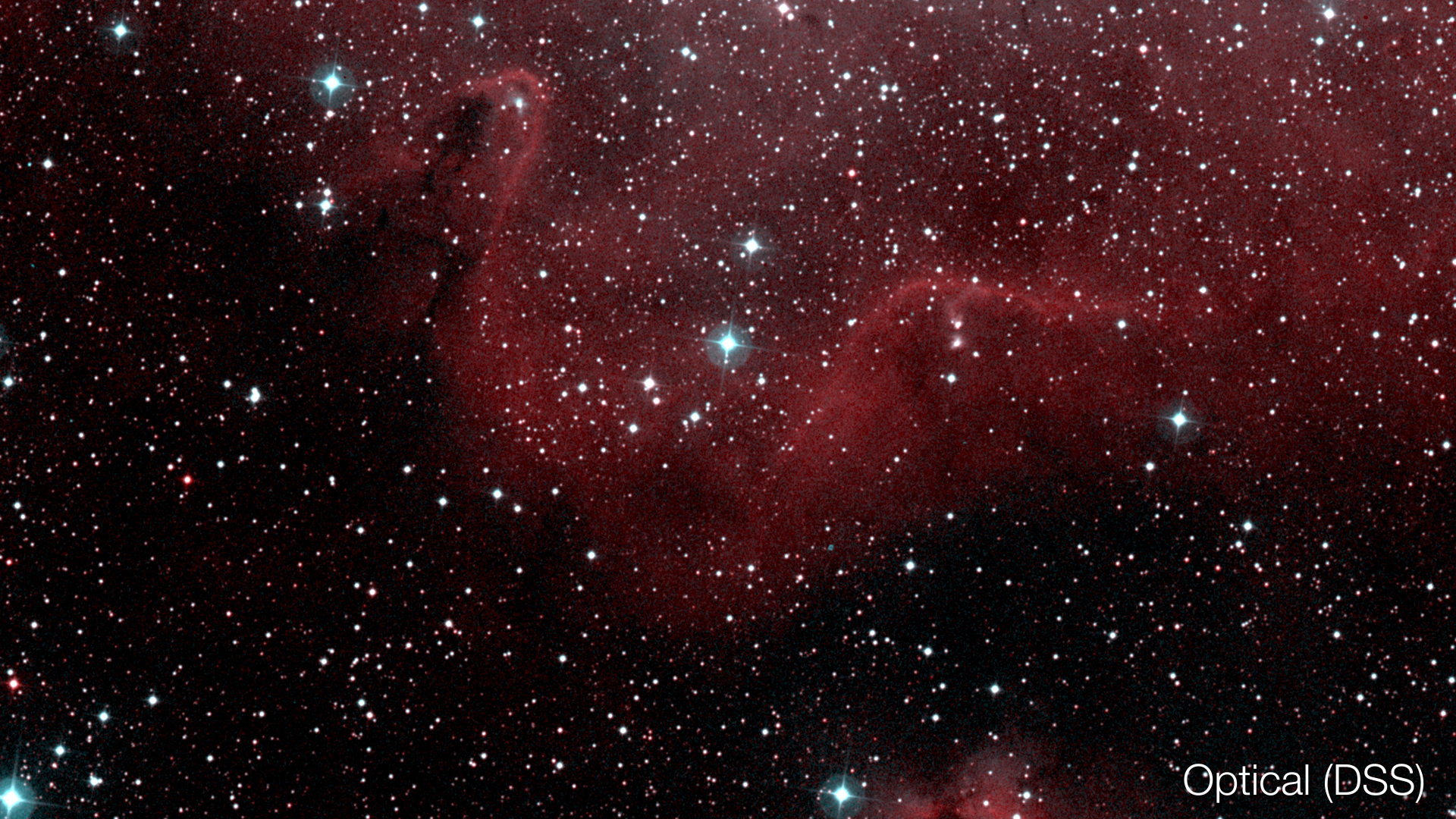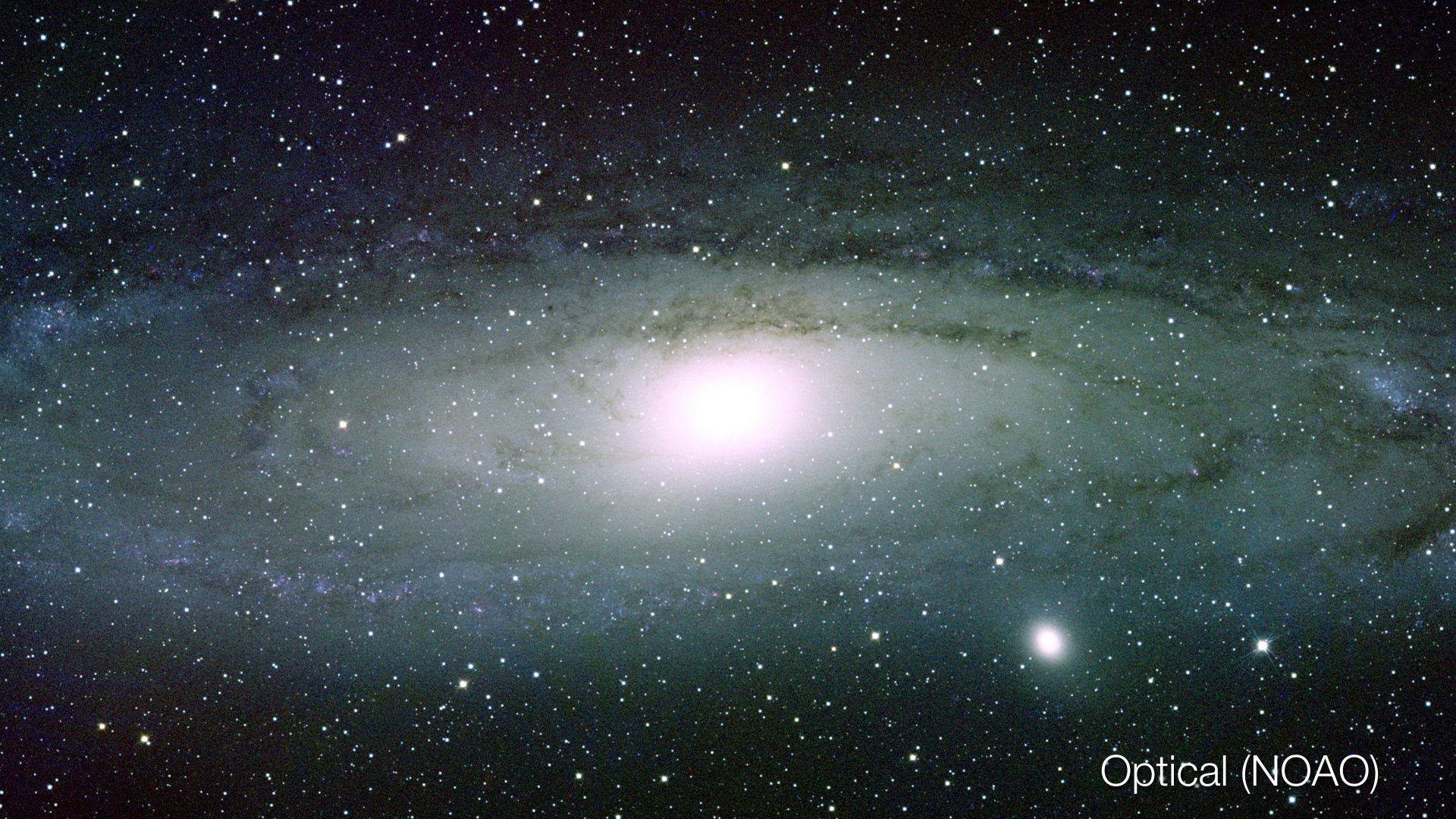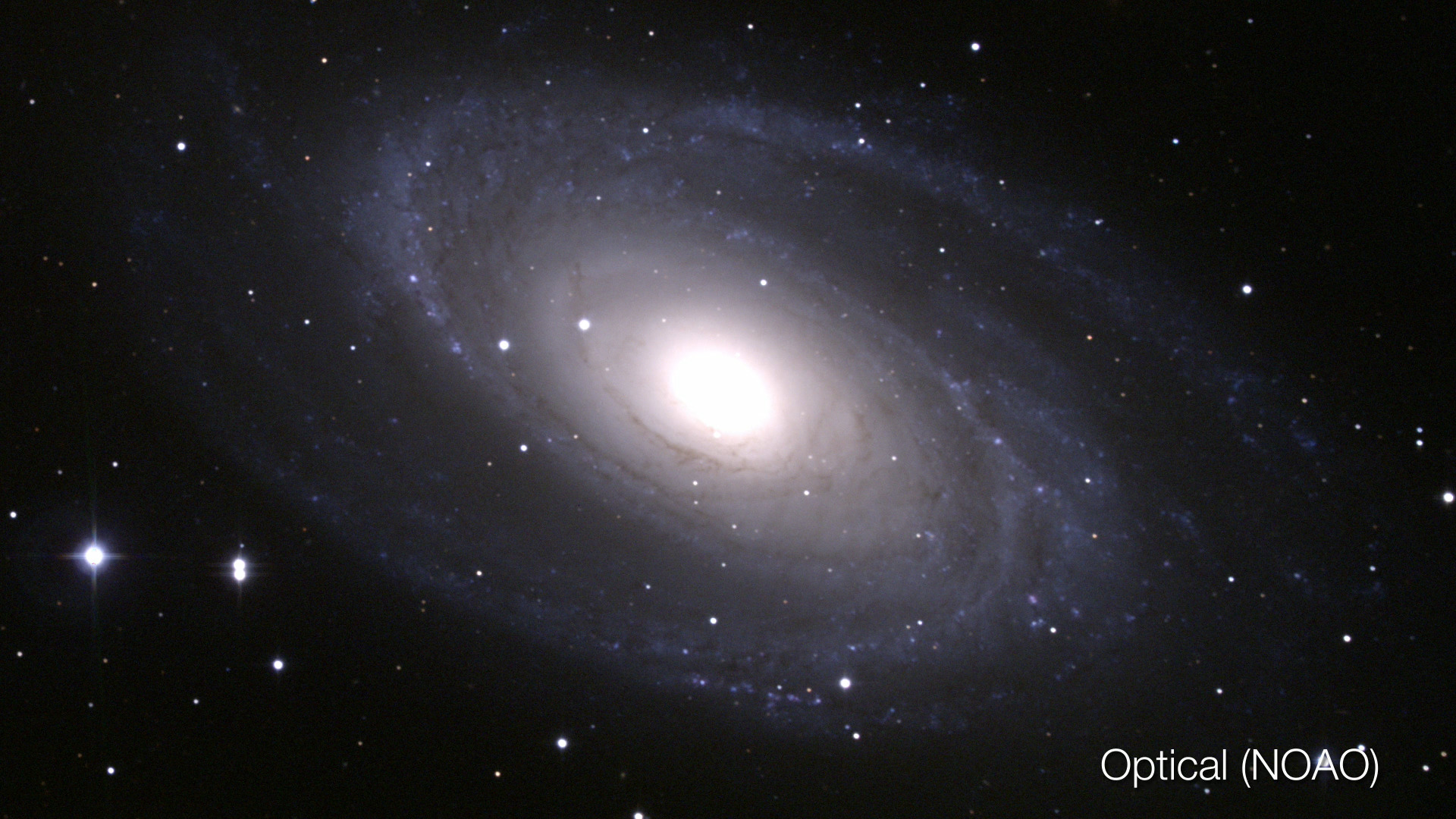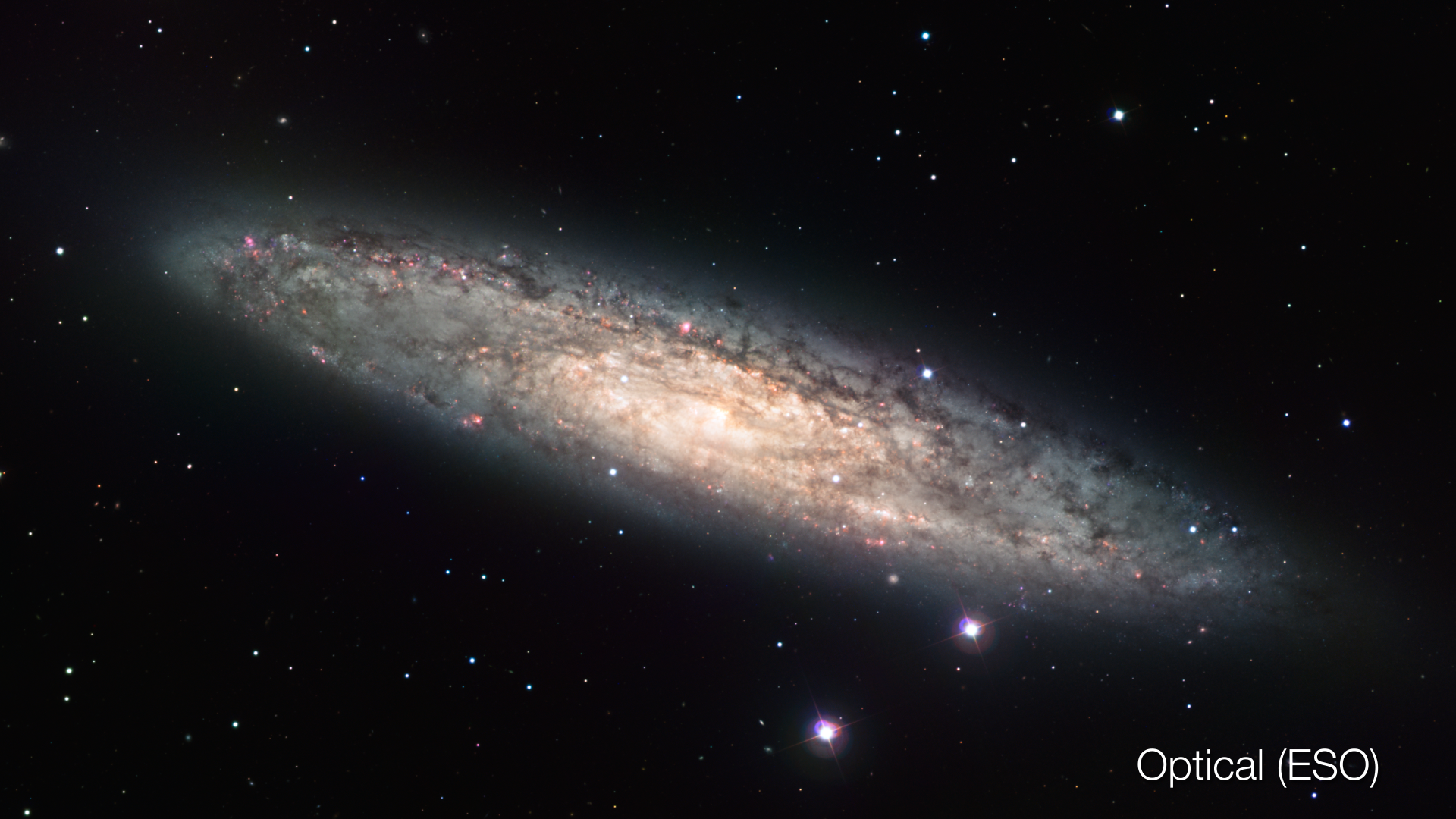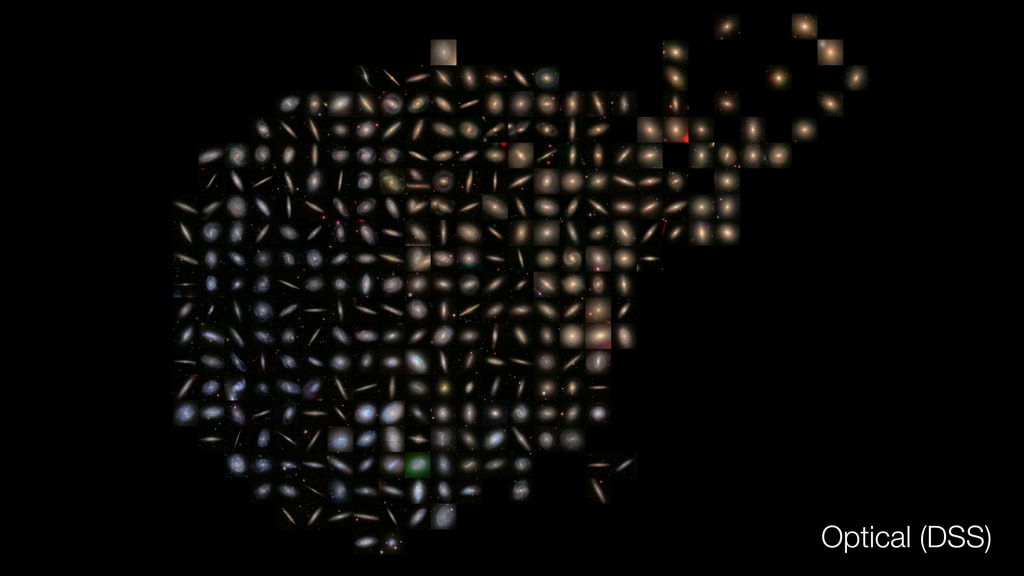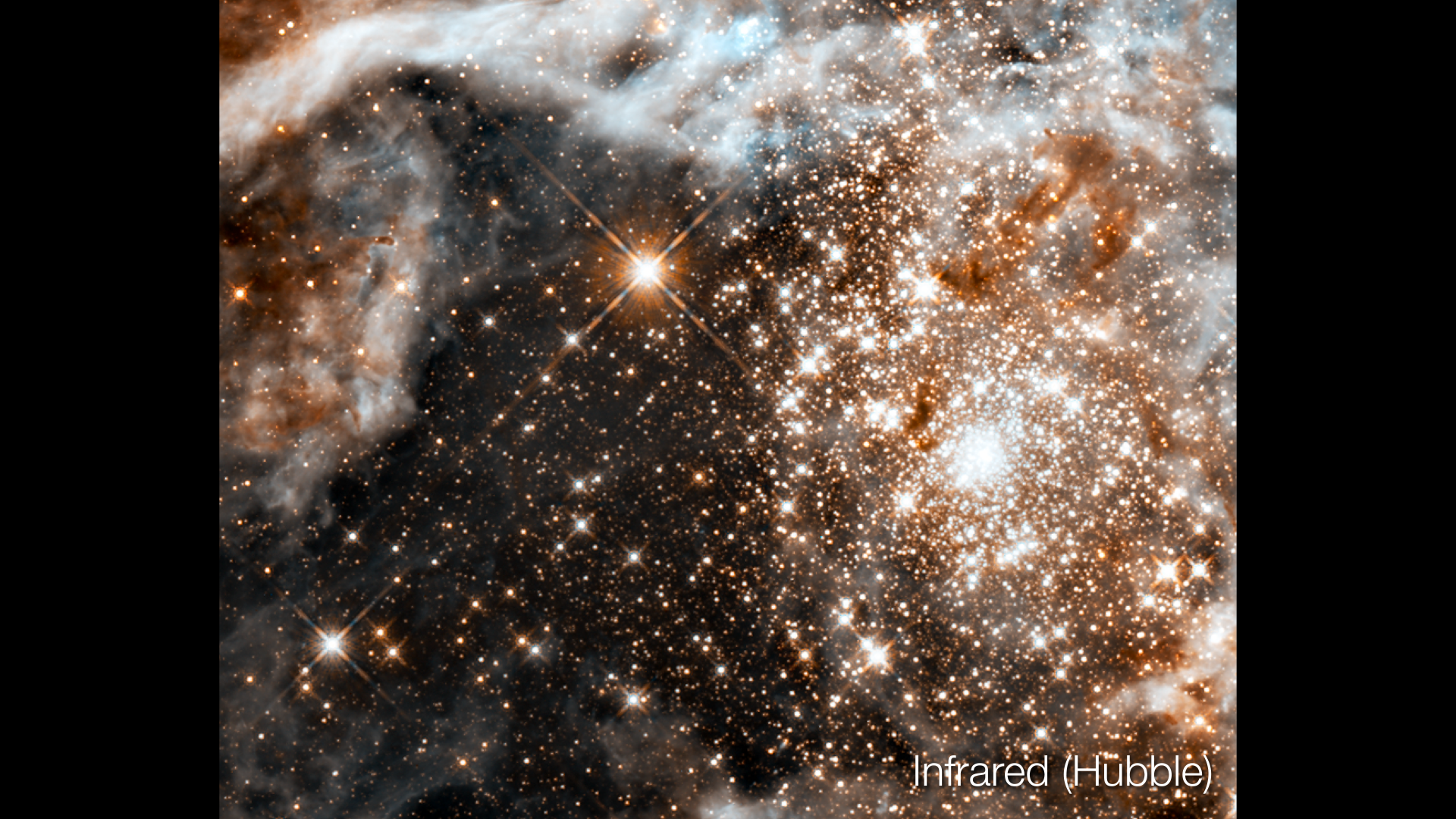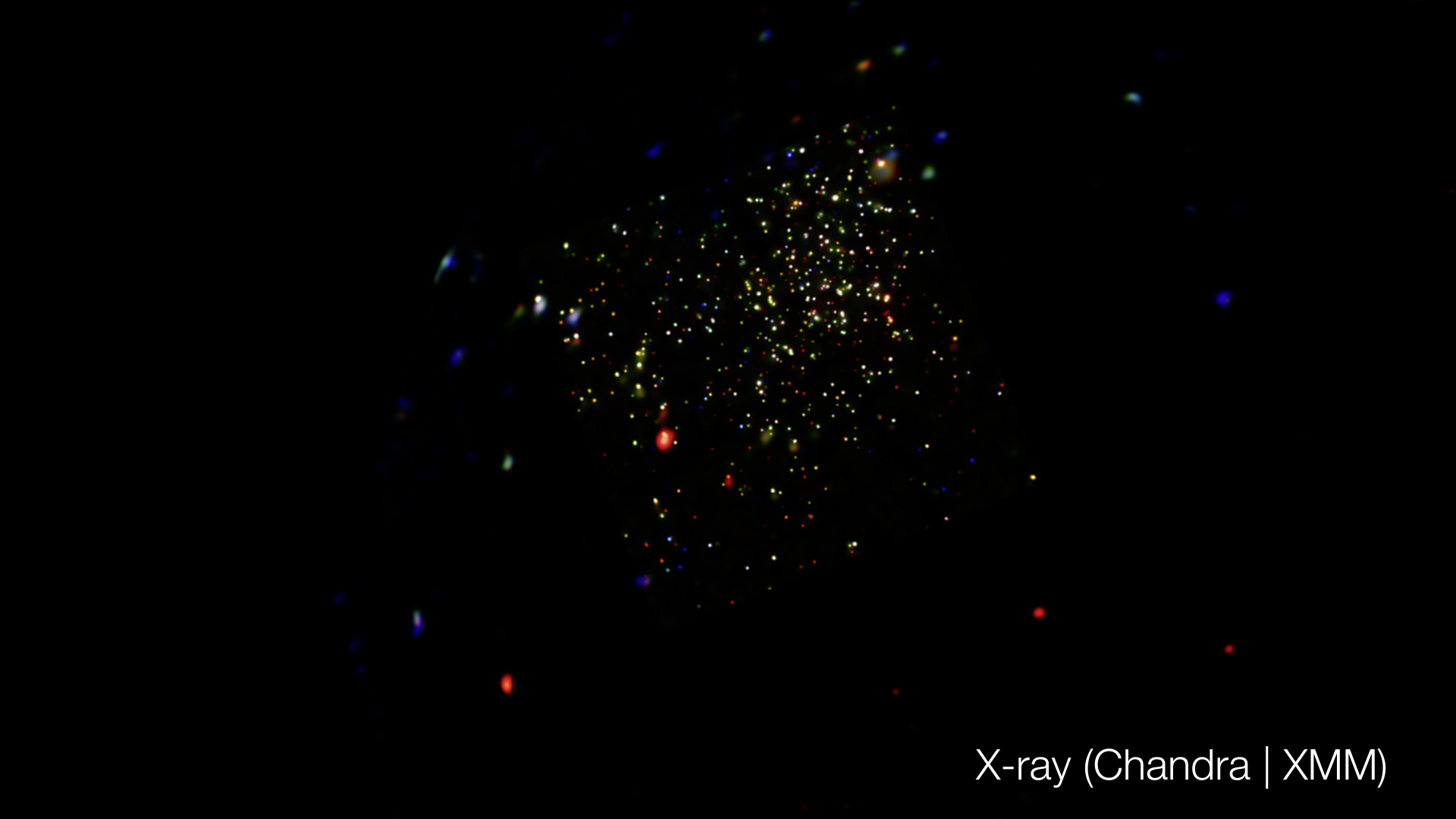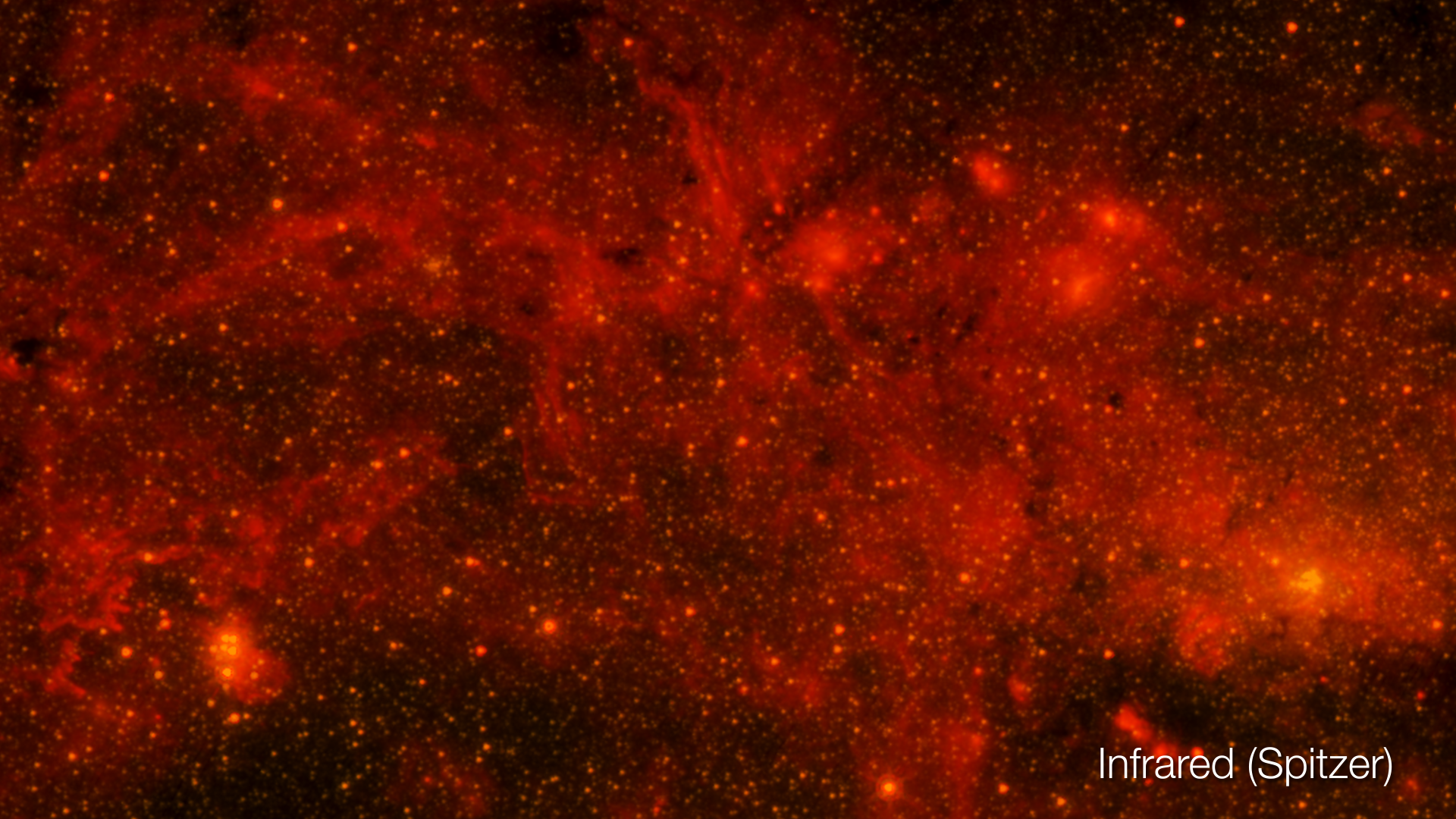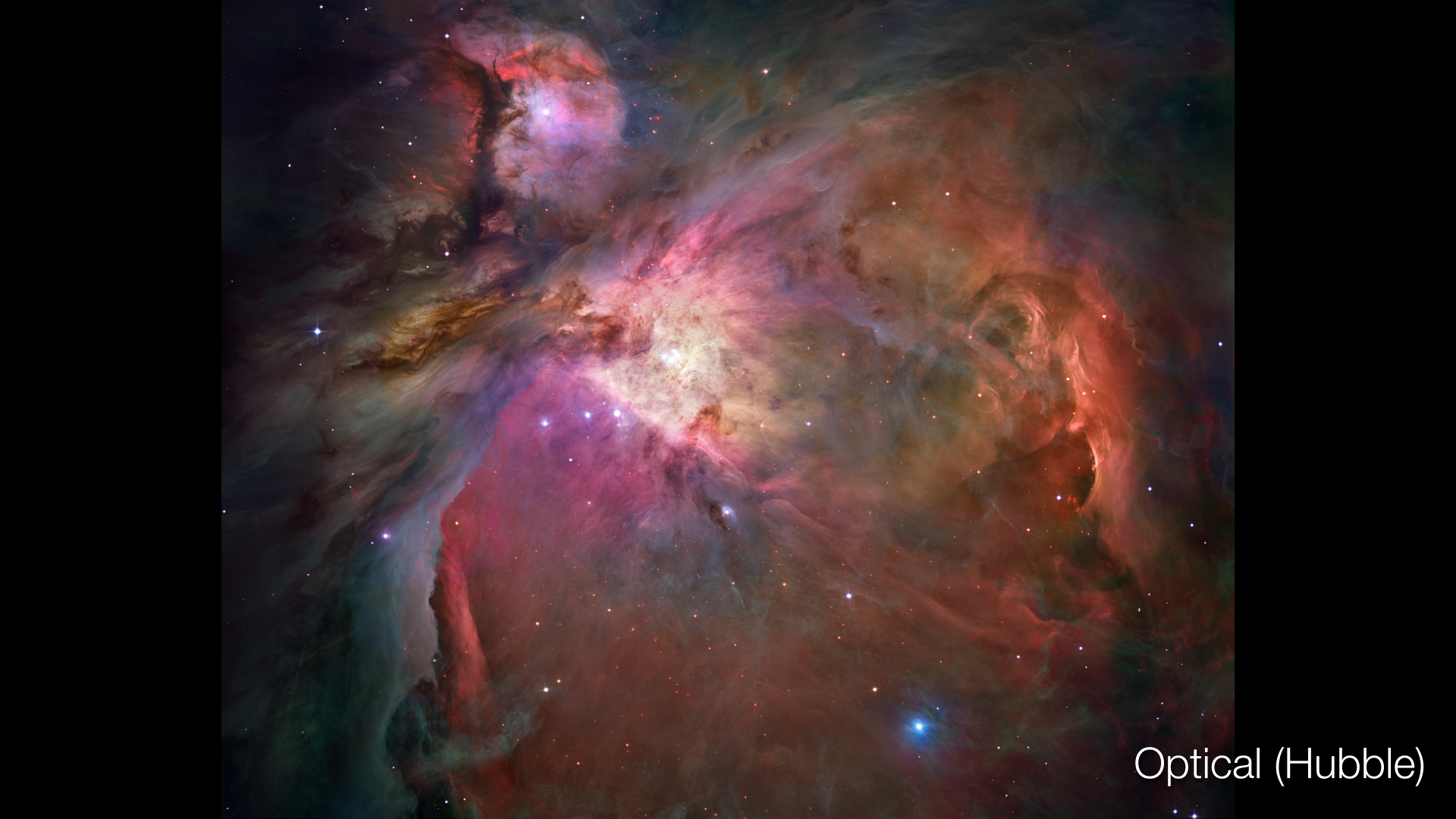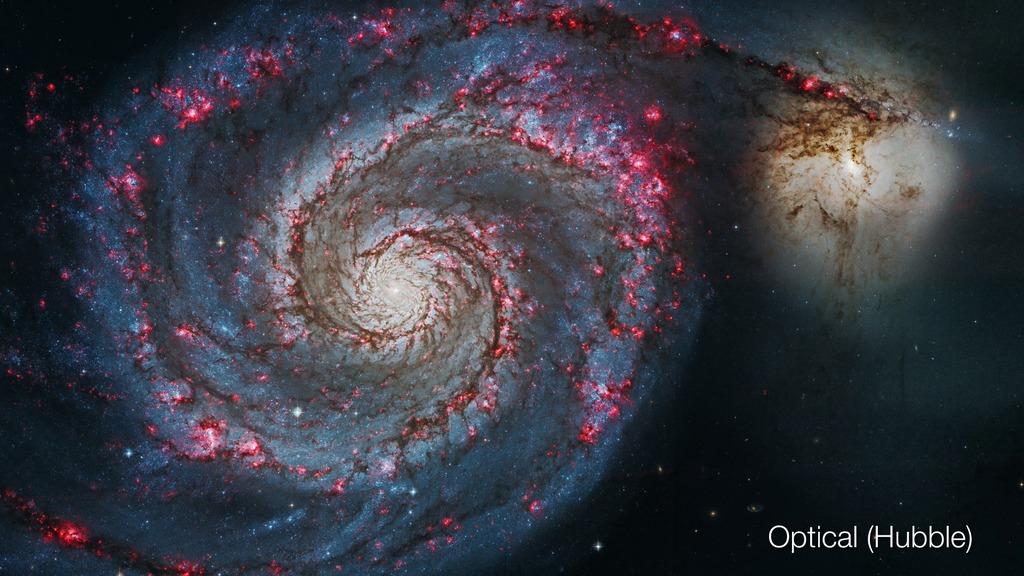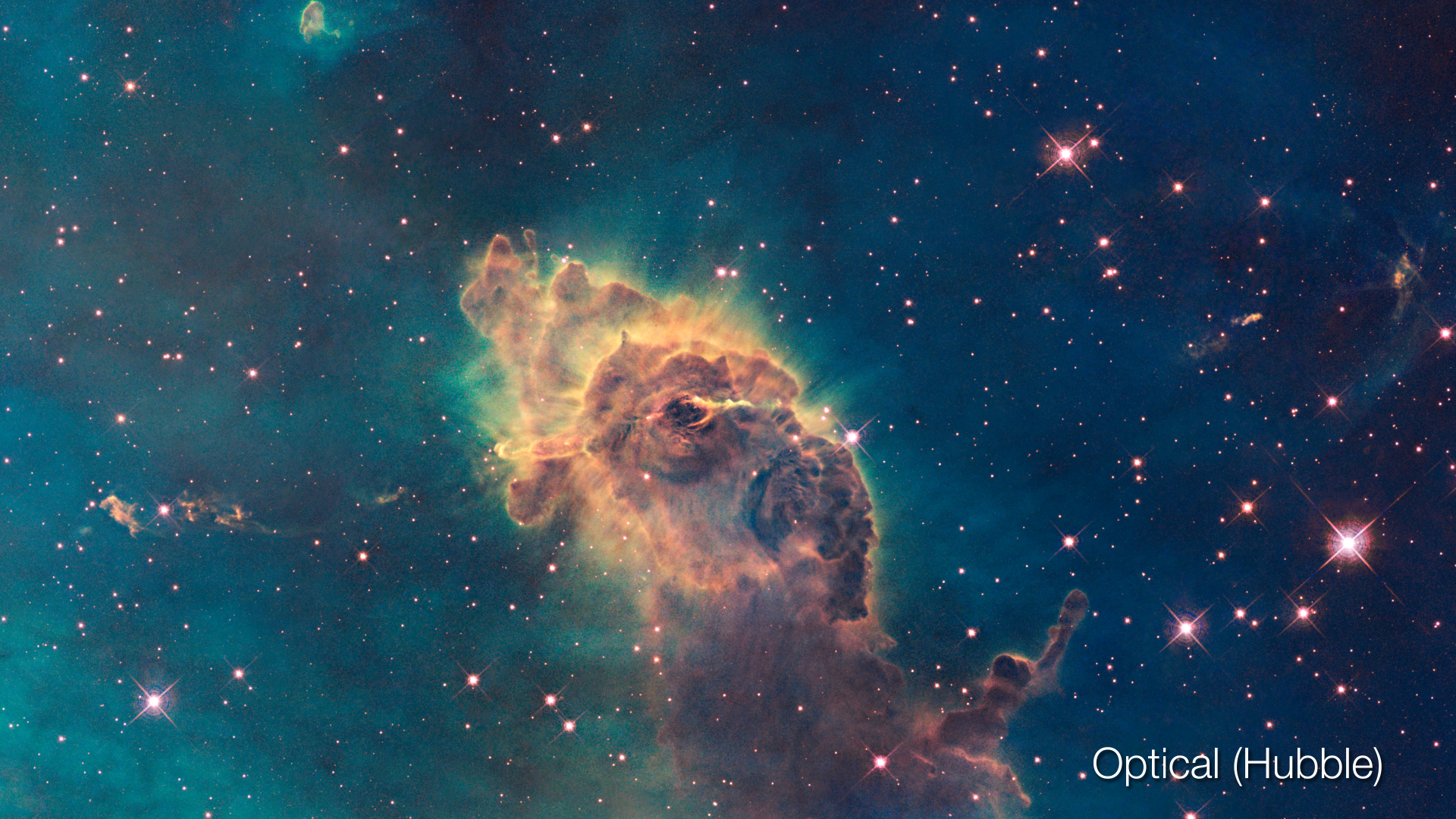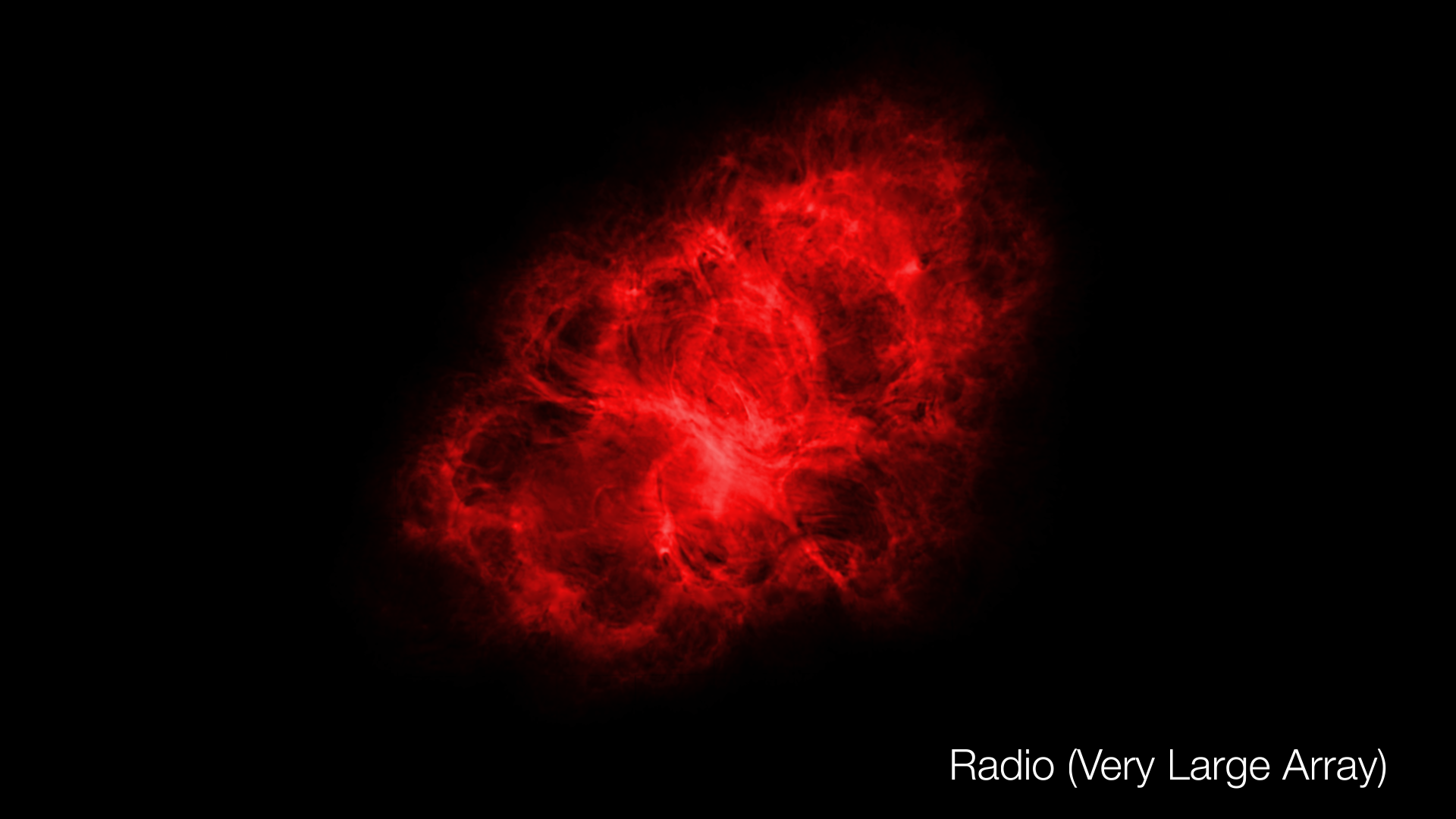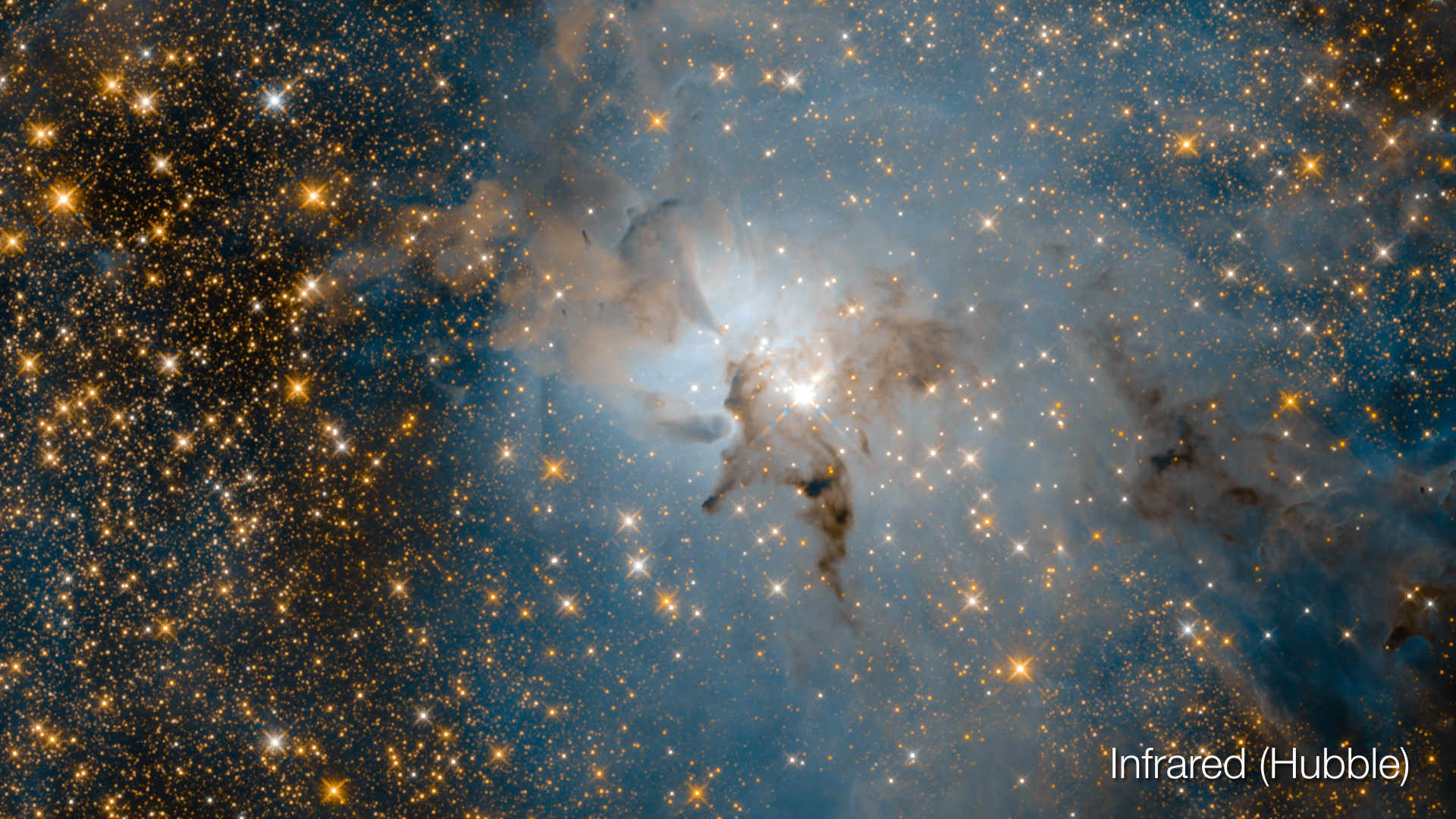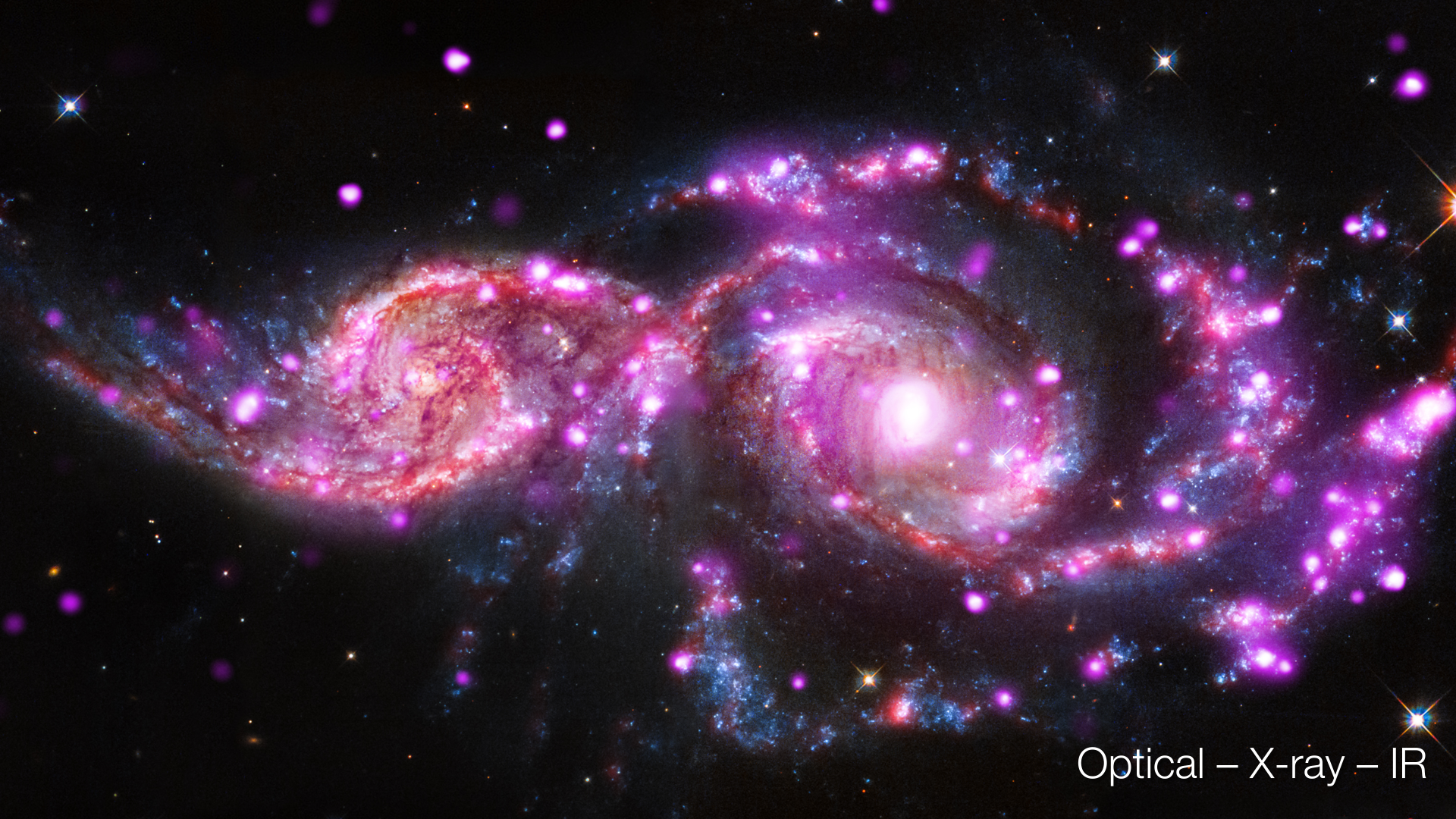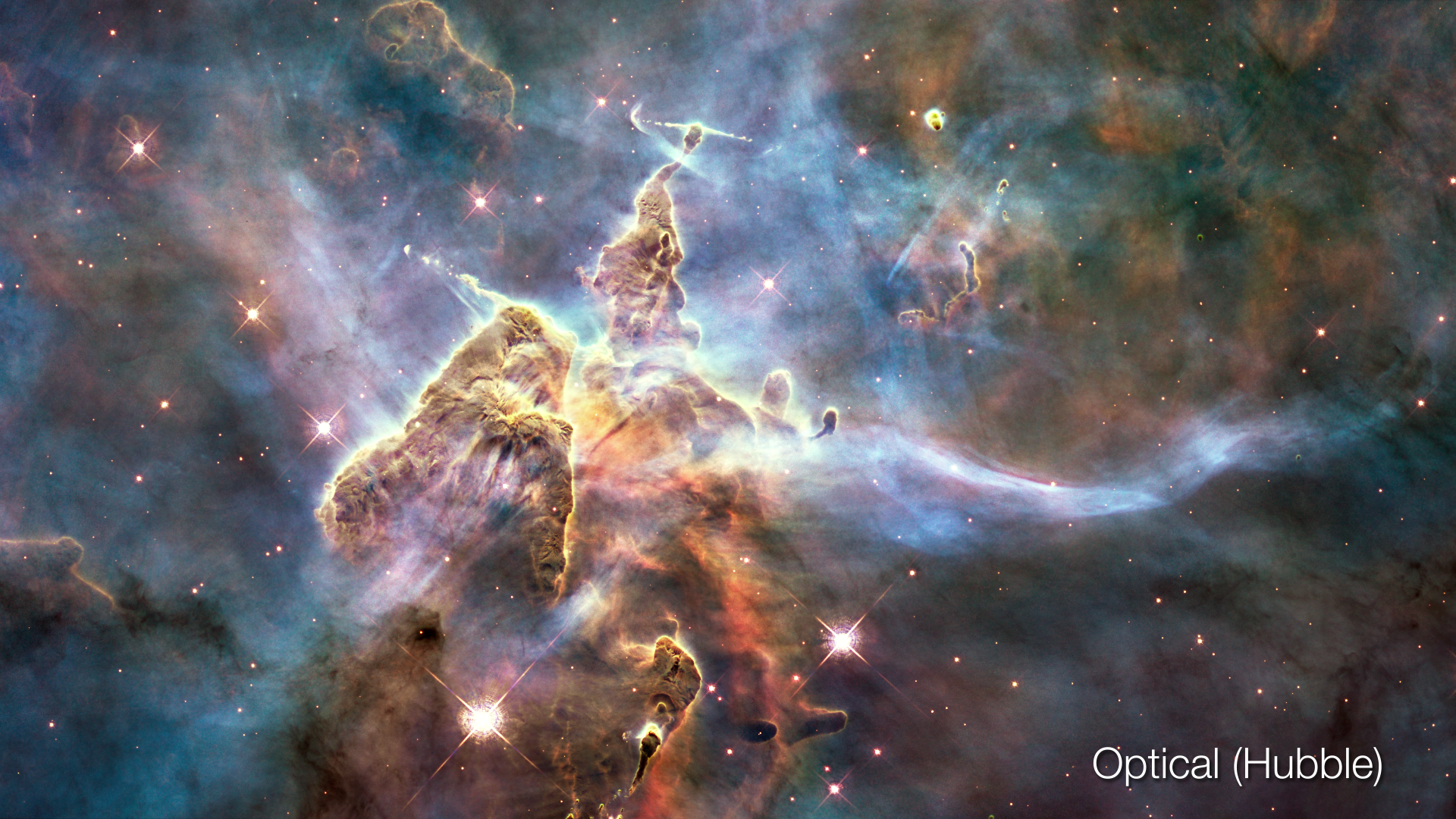Kepler Supernova Remnant
This animation shows the remnant of Kepler's Supernova, shown first in infrared, then visible, then low energy X-ray, then high-energy X-ray emission and finally in combination.
In 1604, astronomer Johannes Kepler noted the appearance of a new bright object in the sky, visible to the naked eye for the next 18 months. Today we know that he was seeing the death of a star 20,000 light years from Earth. It was more than ten times the mass of our sun.
Now, more than four hundred years later, several of NASA’s Great Observatories combined to produce a multi-wavelength image of the expanding remnant. Although the initial blast was caused by the implosion of the star core that rebounded to violently eject material. The supernova today can be seen as it impacts surrounding material that was likely ejected in previous episodes of losing mass into space.
The multiple wavelengths show separated layers of emission that represent different portions of the impact. Infrared (Spitzer) traces the coolest material as it is heated by the ejecta. The optical emission (Hubble) traces hot (several thousand degree) gas that is excited by the collision. The lower energy X-ray (Chandra) represents much hotter gas - up to a few million degrees, Fahrenheit, similar to the hot corona of our sun. The highest energy X-ray emission can reach tens of millions of degrees. This emission is closest to the most powerful portions of the expanding blast wave. The observations reveal that Kepler's supernova was a "Type Ia" - a supernova caused by the transfer of material between two smaller dwarf stars. The added material brings the total mass of one of the stars beyond the critical threshold for supernova collapse.
This animation is the same as above, played twice as fast.

Infrared image of Supernova Remnant

Optical image of Supernova Remnant

Lo X-ray image of Supernova Remnant

Hi X-ray image of Supernova Remnant

Infrared, optical, lo X-ray, and hi X-ray images of Supernova Remnant combined
Credits
Please give credit for this item to:
Video: NASA, ESA, and G. Bacon (STScI)
Images: NASA, ESA, R. Sankrit and W. Blair (Johns Hopkins University)
-
Visualizer
- Greg Bacon (STScI)
-
Image processing
- Ravi Sankrit (Johns Hopkins University)
- William P. Blair (Johns Hopkins University)
-
Technical support
- Leann Johnson (Global Science and Technology, Inc.)
Release date
This page was originally published on Monday, June 25, 2018.
This page was last updated on Wednesday, November 15, 2023 at 12:40 AM EST.
Missions
This visualization is related to the following missions:Datasets used in this visualization
-
[Spitzer Space Telescope]
ID: 690This dataset can be found at: http://www.spitzer.caltech.edu/
See all pages that use this dataset -
[Hubble Space Telescope]
ID: 831 -
[Chandra: Telescope System]
ID: 1002
Note: While we identify the data sets used in these visualizations, we do not store any further details, nor the data sets themselves on our site.
